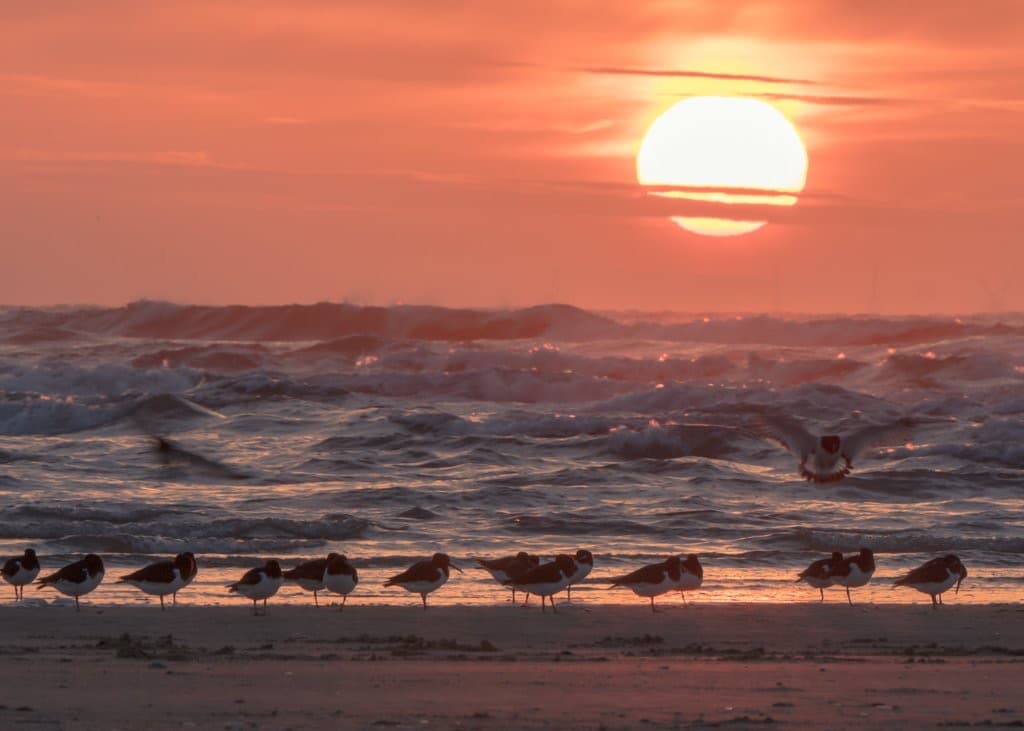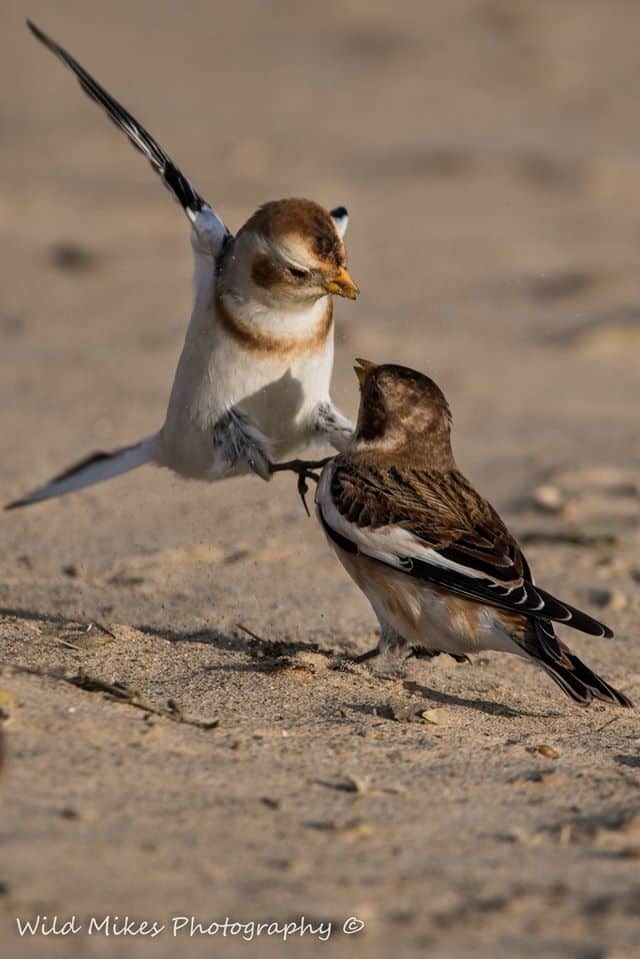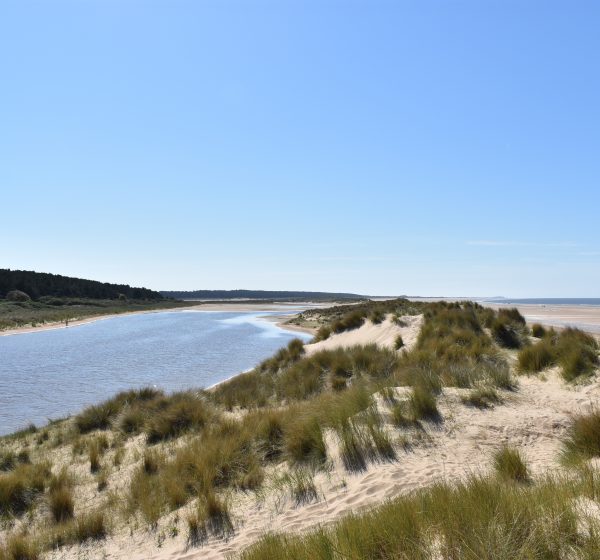
Holkham Beach & Nature Reserve
The foreshore

Sea watching and beachcombing are a speciality of the Norfolk coast; a walk along the wide open shore can be interrupted by spotting a seal or slipping on a jellyfish.
The foreshore itself is an extreme sort of place, exposed to the elements. Very few plants can gain a roothold, and even shellfish find it hard to find any food in the sand. But mud is a different matter. The mouth of the Wells Channel and parts of the eastern shore are muddy and beneath the grey surface there are hidden hordes of Lugworms and Cockles – perfect food for wading birds with long beaks. Shorter beaks come in useful too; thousands of birds dibble about over the surface of the mud to find small invertebrates like worms and mussel larvae. Elsewhere, the tideline attracts packs of Ringed Plovers and Sanderlings; birds that find food by running to and fro between the breaking waves.



Growing on the lower-level muddy shores, and transformed by the sea into dense swaying forests, are intertidal carpets of Sea Lettuce algae and Eel-grass. These plants may look unappetising but are the staple diet of one of Holkham’s key birds, the Brent Goose. Several thousand of these Siberian Brents overwinter here, grazing in the shallows and roosting on the wide open mudflats with Shelduck and waders.
It may seem odd to seek safety in a place where you can be seen from three miles away but, conversely, nothing can creep up on you. Geese have learned to keep themselves to themselves. The same reasoning applies to seals. You can see both Common and Grey Seals hauled out in the distance and looking like driftwood tree-stumps beside the Blakeney Channel, but getting anywhere close to them is another matter. The best sightings are to be had from the boat trips from Morton and Blakeney.

Summer birds to spot
- Ringed Plover – ‘broken-wing’ distraction displays as they entice you away from breeding sites.
- Oystercatchers – feeding chicks on the beach.
- Little Terns – carrying fish to chicks in the tern colonies.
- Wheatears – feeding on the tide line on spring migration.
- Swallow – migrating along the shoreline in spring and autumn.
- Meadow Pipits – feeding on the saltings.
- Arctic Skua – chasing Terns to steal fish.
- Sanderling – running at the edge of the sea.



Winter birds to spot
- Brent Geese – feeding in Holkham Bay.
- Shelduck – searching for small crustaceans and molluscs in Holkham Bay.
- Redshank – feeding in shallow pools.
- Shore Lark – searching actively on pioneer saltmarsh for seeds.
- Twite – flighting from Holkham Bay to farmland to drink fresh water.
- Snow Bunting – sometimes joining mixed flocks of Shore Larks and Twite.
- Black-headed Gulls – thousands settling to roost at Wells.
- Sparrowhawk – shadowing feeding Finch and Lark flocks in Holkham Bay.



